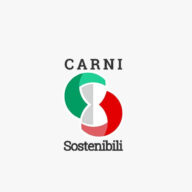
The reality of antibiotic use in animals in Europe
We often hear sentences like “Animals consume 70% of all antibiotics” But what does this mean exactly, and is it true?
It Is certainly a great shock figure that is often quoted, but the calculations – made many years ago – use gross tonnage to get this figure. Today this is considered a poor way to compare the use of antibiotics in humans and animals.
If you look instead at the more realistic population biomass-corrected calculation, the most recent data available indicates a lower consumption of antibiotics in livestock than in people in EU countries.
Let’s not forget both the potency of the antibiotics used and the patient biomass
Gross tonnage as a measurement does not consider two very important factors: the potency of the antibiotic and the biomass. The newer antibiotics which are more widely used in human medicine are more potent and thus require a lower dose than the older antibiotics commonly used in veterinary medicine. In other words, one ‘therapeutic dose’ of the newer antibiotics commonly used in human medicine weighs less than the equivalent ‘therapeutic dose’ of the older antibiotics commonly used in veterinary medicine.
Moreover, the dose of an antibiotic is calculated based on the patient’s body weight. Therefore, a 650 kg dairy cow would need a much larger dose than an 80 kg person. Animal numbers also play their part. For instance, although weighing much less, chickens are far more numerous, with billions of chickens being produced for consumption in the EU every year. Because of this a measurement correcting for population and body weight such as, milligrammes of antibiotic per kilogramme of body weight (mg/kg body weight) or mg/PCU (population correction unit) as used by the EMA is a better measurement of the quantity used.
Less antibiotics for food-producing animals than for humans
The European Food Safety Authority (EFSA), the European Medicines Agency (EMA) and the European Centre for Disease Prevention and Control (ECDC) recently published their fourth joint inter‐agency report on integrated analysis of data on antimicrobial consumption and resistance in bacteria from humans and food-producing animals in Europe for 2019-2021. Experts from the three EU agencies state in the report that between 2014 and 2021, the mean total antimicrobial consumption in mg per kg food-producing animals decreased by 44%, while in humans, it remained relatively stable. Figure 8 from the report shows the consumption as higher in humans than animals in the EU for a number of years now.

The significant fall in antibiotic use in food-producing animals suggests that the measures taken at the country level to reduce the need to use antibiotics are proving effective.
The report also shows that in food-producing animals, statistically significant reductions in the consumption of 3rd- and 4th-generation cephalosporins, quinolones, polymyxins, aminopenicillins and tetracyclines were registered during 2014–2021 in at least one quarter of countries analysed. This is a positive One Health development, as polymyxins are often used in hospitals to treat patients infected with multidrug-resistant bacteria, and 3rd- and 4th-generation cephalosporins and quinolones are also on the EMA priority list for human health.
In the EU, a massive reduction in veterinary antimicrobial use
In November 2023, the EMA reported a 53% decline between 2011 to 2022. According to the 2022 European Surveillance of Veterinary Antimicrobial Consumption (ESVAC) report, the aggregated sales for the 27 EU Member States were 84.8 mg/PCU, which corresponds to a reduction of 33.5 mg/PCU (28.3%) in comparison to the 2018 reference value behind the 50% reduction target set in the EU Farm to Fork Strategy. This means Member States have already made significant progress towards the reduction target set for 2030.
And Europe is not alone in reducing the use of antibiotics in animals. The 2023 annual report on Antimicrobial Agents Intended for Use in Animals from the World Organisation for Animal Health (WOAH) confirms that the global use of antimicrobials in animals fell by 13% between 2017 to 2019.
Source: European Livestock Voice





